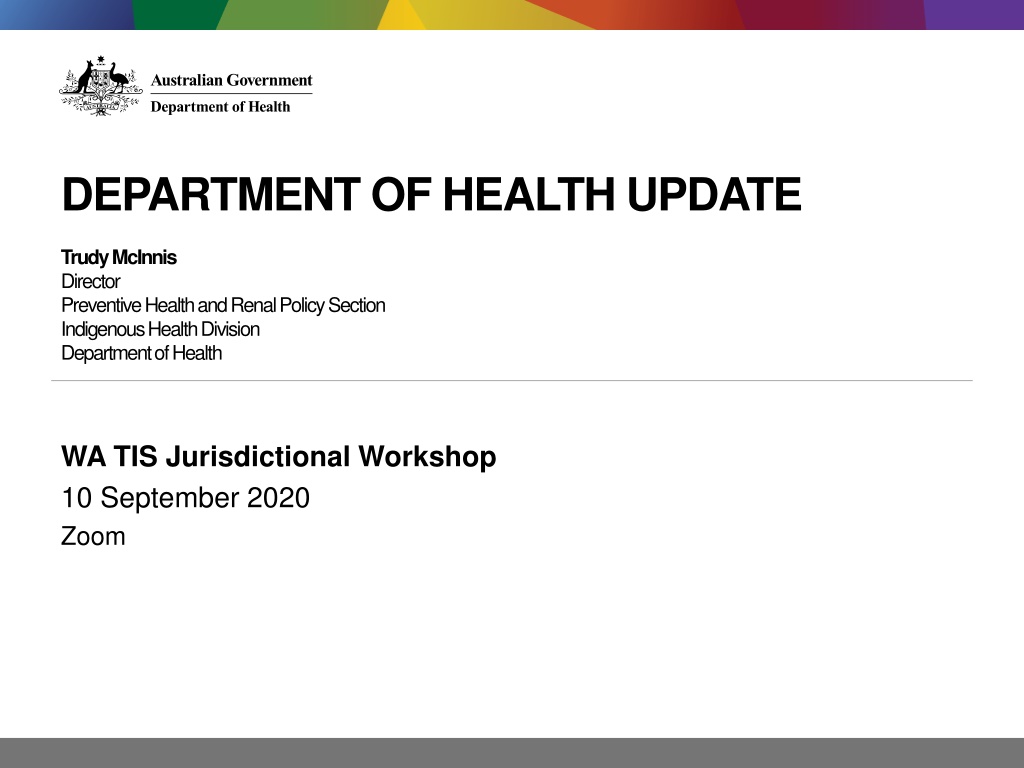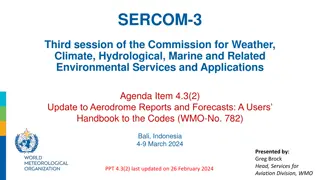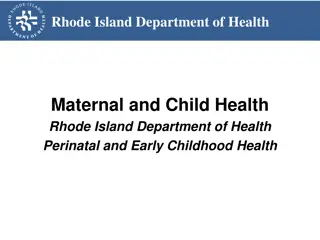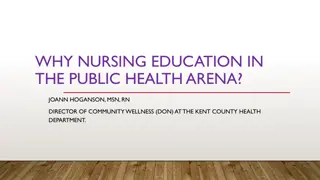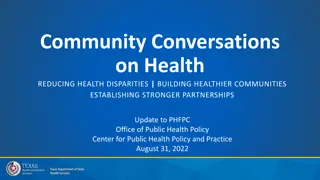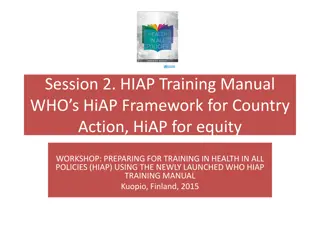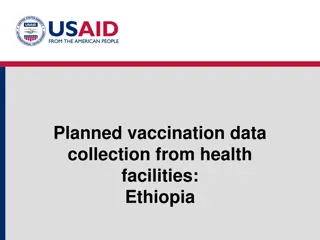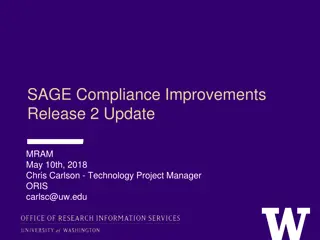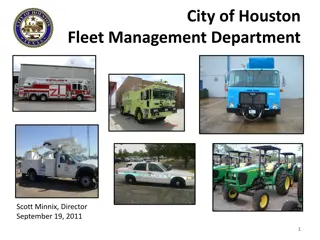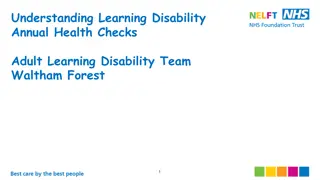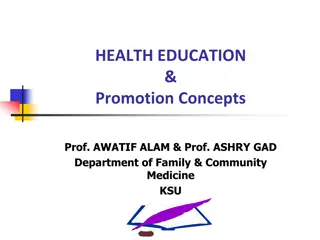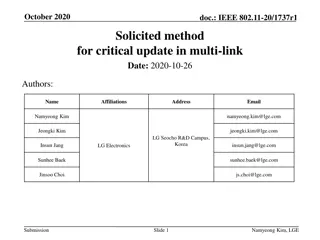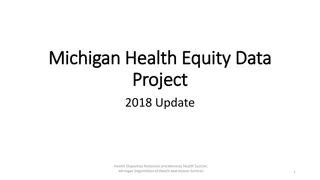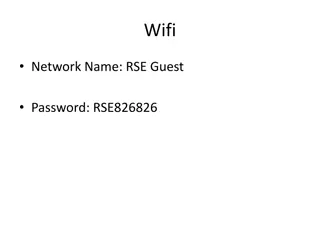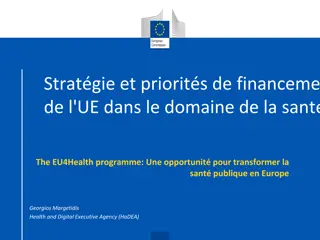DEPARTMENT OF HEALTH UPDATE
New data from the Australian Bureau of Statistics reveals smoking trends among Indigenous populations, with efforts to address smoking cessation in remote areas through new initiatives and partnerships. The update highlights smoking prevalence, changes over the past years, and the establishment of the NT Remote Indigenous Tobacco Control Working Group.
Download Presentation

Please find below an Image/Link to download the presentation.
The content on the website is provided AS IS for your information and personal use only. It may not be sold, licensed, or shared on other websites without obtaining consent from the author. Download presentation by click this link. If you encounter any issues during the download, it is possible that the publisher has removed the file from their server.
E N D
Presentation Transcript
DEPARTMENT OF HEALTH UPDATE Trudy McInnis Director Preventive Health and Renal Policy Section Indigenous Health Division Department of Health WA TIS Jurisdictional Workshop 10 September 2020 Zoom
Whats happened over the last year ? New data The Australian Bureau of Statistics (ABS) produced update data: National Aboriginal and Torres Strait Islander Health Survey 2018-19 o Around four in 10 (41%) Indigenous people aged 15 years and over were current smokers o 37% smoked every day o Another 3% smoked but not every day o The proportion of people who smoked every day was: 4% lower than in 2012 13 about the same for males (39%) and females (36%) higher for people living in remote areas (49%) than in non-remote areas (35%) lowest for people aged 15 17 years (10%), compared with around 40% for all other age groups. o People aged 15 years and over who smoked every day averaged 12 cigarettes per day. 1
Whats happened over the last year ? The good news The proportion of people aged 18 years and over who smoked every day steadily decreased in non-remote areas over the last 14 years, from 49% in 2004 05 to 37% in 2018 19. The proportion of young people who had never smoked between 2012 13 and 2018 19 increased: from 77% to 85% for those aged 15 17 years and from 43% to 50% for those aged 18 24 years. The bad news The proportion of people in remote areas aged 18 years and over who smoked every day did not change significantly between 2012 13 and 2018 19. 2
Whats happened over the last year ? New/expanded remote RTCGs Expanded funding to Congress, Alice Springs, NT Implementing 3 new remote RTCGs: o Institute for Urban Indigenous Health, Tiwi Islands, NT o Torres Health Indigenous Corporation, Torres Strait Islands, QLD o Wurli Wurlinjang Aboriginal Corporation, Katherine, NT Commissioning CIRCA to do a more in-depth evaluation of the sites regarding barriers and enablers to smoking cessation in remote areas Commissioning NBPU to have a resource dedicated to supporting new/expanded sites 3
Whats happened over the last year ? New NT Remote Indigenous Tobacco Control Working Group Sits under the NT Health Partnerships Forum Chaired by Prof David Thomas, Menzies Members: AMSANT, NT Gov, Cth Gov, Menzies, NIAA, NBPU First meeting in April 2020; meets every month First deliverable: workplan Potential for extrapolation to other remotes areas 4
Whats happened over the last year ? Smoking in Pregnancy Roundtable 20 February 2020 in Canberra Chaired by Prof Tom Calma Approx 35 participants; approx 15 presenters Main themes need more: trauma-informed approaches; wrap- around services; improved health service and client education Video and transcript: available on TISRIC https://tacklingsmoking.org.au/resources/pregnancy-roundtable-2020/ 5
Whats happened over the last year ? Governance NBPU Advisory Group has ceased TIS Technical Advisory Group has been established Inaugural meeting late May 2020 Administration With CIRCA, finalised performance report and activity work plan templates and the Monitoring & Evaluation Framework and Performance Indicators Completed a Deed of Variation that changed reporting timelines 6
Whats happened over the last year ? Continued to work with: ANU on outcome evaluation CIRCA on impact evaluation Professor Tom Calma on national co-ordination Quitlines Cancer Council SA on Quitskills DSS Community Grants Hub on grants administration University of Newcastle on iSISTAQUIT 7
Whats happened over the last year ? COVID-19 RTCGs are encouraged to continue to work on TIS activities Evidence is emerging that smoking may increase risk of infection and may inhibit recovery There are immediate benefits when smoking is ceased that may be protective 8
What are our plans for the coming year? Underspends project 2017-18 Underspend Total: $891,012.80 Recovered: $425,764.02 2018-19 Underspend Total: $340,011.26 Recovered: $264,894.41 17 February, 2025 Penny Jones PowerPoint FINAL 9
What are our plans for the coming year? Continue to focus on remote and pregnant women Continuous quality improvement: o Quitlines o Quitskills o NBPU thematic review of AWPs o Other o Continue to work productively with stakeholders; work on identifying the best use of resources 10
Questions 11
Thank You IndigenousTobacco@health.gov.au 12
